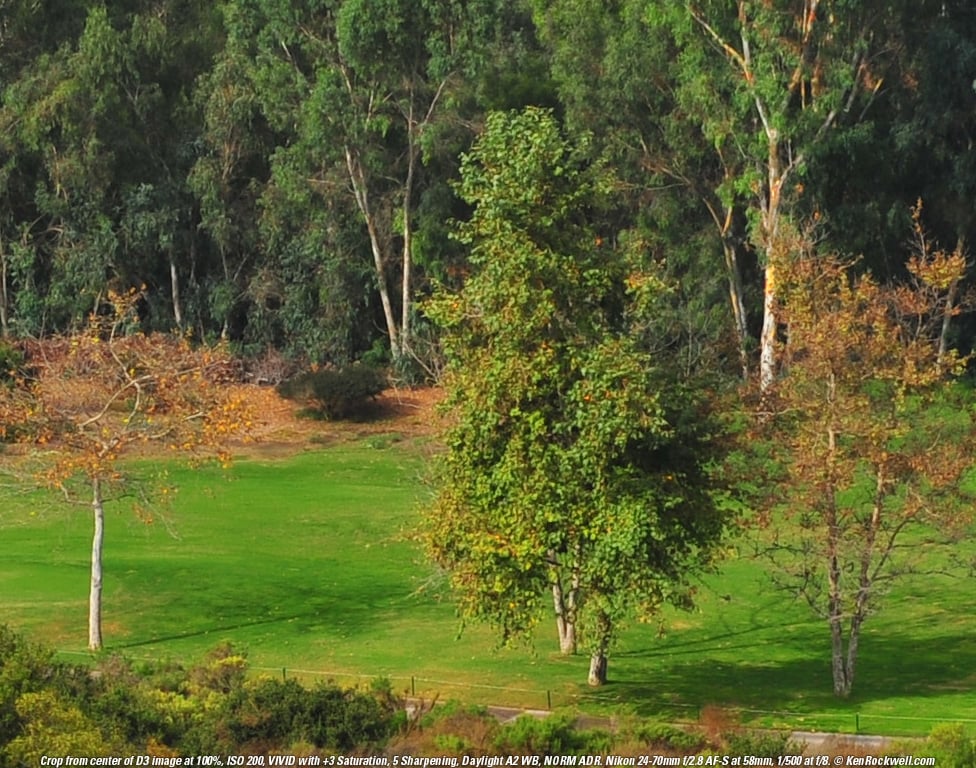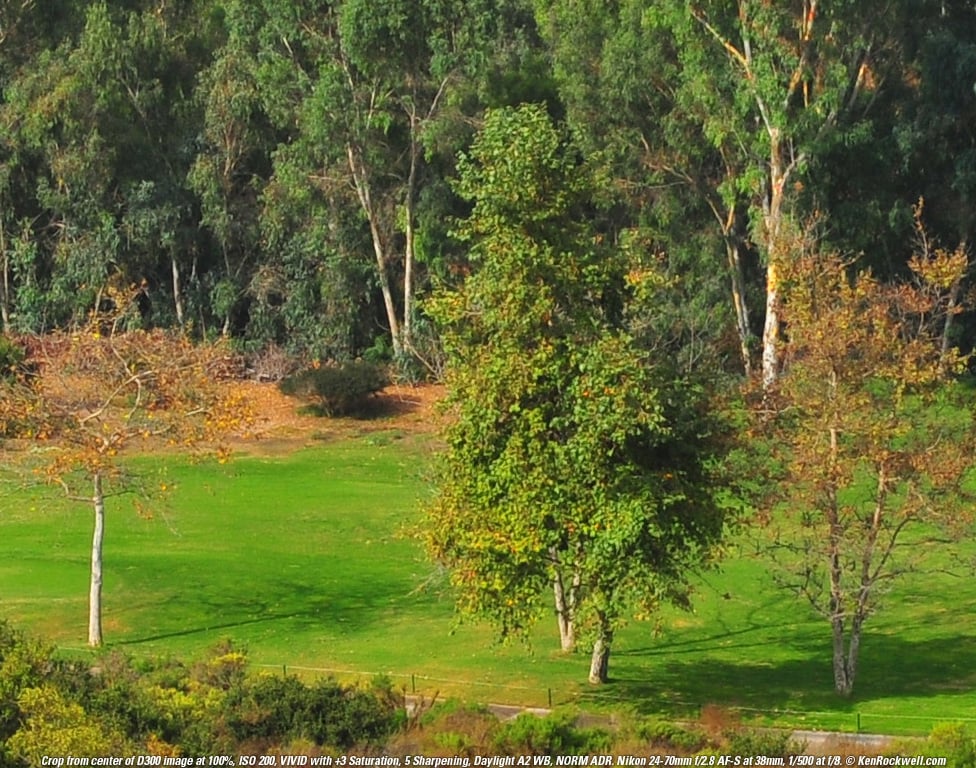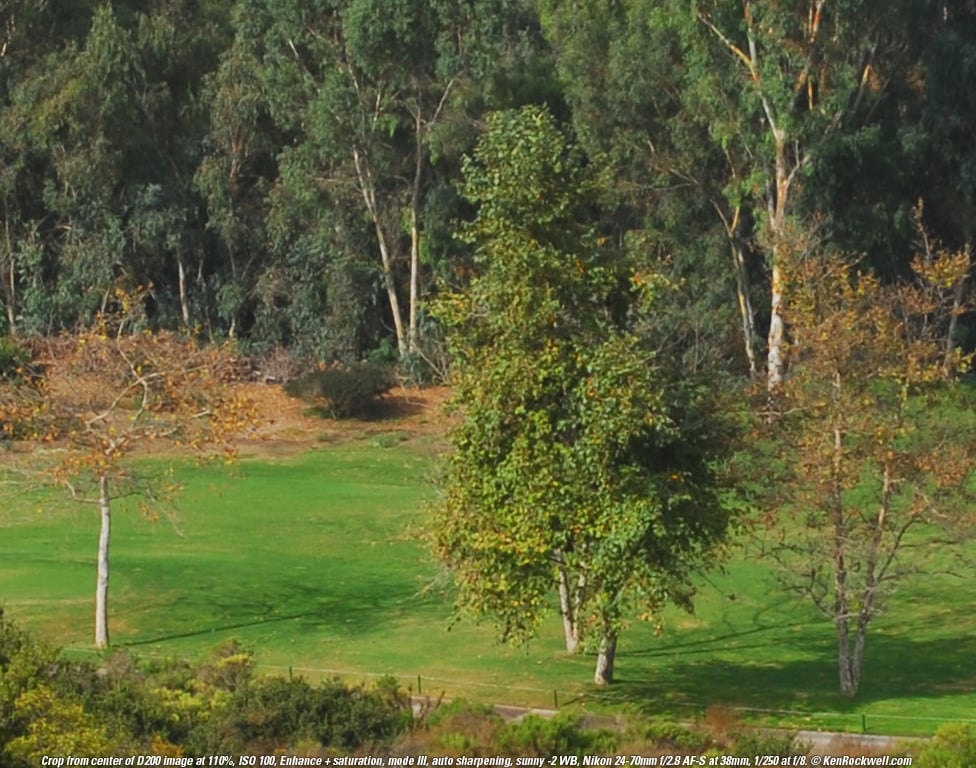Home New Search Gallery How-To Books Links Workshops About Contact
Nikon D3, D90, D300 and D200 September 2008 More Nikon Reviews Nikon D3 Review Nikon D90 Review Nikon D300 Review Nikon D200 Review NEW: Nikon D90 iPod and iPhone App.
As we say in racing, the BS stops when the green flag drops. Let's see which camera is the sharpest. The three Gen 2 cameras have the same 12 MP resolution. Here are crops from 100% images directly from each. The D200 has slightly less resolution, so it was scaled to match the other three. The D3 has a larger FX sensor, while the others are DX. I changed the zoom setting to retain the same framing. Analysis back to top As expected, all the Gen 2 cameras match perfectly, regardless of format. The $5,000 D3 looks not just similar to, but exactly like the $999 D90. Put these images 4-up on a 30" monitor as I do, instead on one-at-a-time on a web browser, and the similarites become even more obvious. The only slight differences are from the slight changes in cloud cover from frame to frame. As we saw before, the D700, not shown here, matches the D3 and D300, so all four current Gen 2 cameras (D3, D700, D300 and D90) match. Wonderful! Online experts will go on and on trying to compare different cameras shot under different conditions, but if you actually shot these sorts of things for yourself, even I'm amazed at just how identical these three crops look. Things never matched this well between cameras before Nikon came up with the Picture Controls menus that are designed to keep the same look among different cameras. The D200, an old Gen 1 design, looks like poop because it simply has no ability to crank its saturation to the levels needed for landscapes. Therefore it looks dull and weak here. If I shot these cameras set to their default STANDARD settings, the D200 would have looked less bad by comparison because all the cameras would have been set to look as bad as the D200. Technik back to top These are crops from the center of each image. The full image at this magnification would print over 40 inches (1 meter) wide. I use specially grown reference trees at a regional arboretum (tree museum) instead of man-made objects like star targets, classified ads or buildings precisely because an educated eye can see far more with natural targets. Trees have a fractal nature, meaning that there is detail at every level, every resolution, every amplitude and in every direction. Artificial target edges only have detail at odd-harmonic series, at discrete amplitudes and only in some directions. Test targets miss a lot of things that become obvious with appropriate natural targets. There was no wind and no heat shimmer. Slightly hazy daylight, no wind, no heat shimmer. Daylight A2 WB. Sharpening set to 5, saturation set to +3. ADR set to NORM for D3 and D300, set to AUTO in D90. D200 set as shown, no ADR. Nikon Zoom-NIKKOR 24-70mm f/2.8 AF-S set to 38mm for DX cameras, and 58mm on D3. This lens, as do most lenses at f/8, has far more resolving power than any of these cameras.
PLUG I support my growing family through this website. If you find this as helpful as a book you might have had to buy or a workshop you may have had to take, feel free to help me continue helping everyone. If you've gotten your gear through one of my links or helped otherwise, you're family. It's great people like you who allow me to keep adding to this site full-time. Thanks! If you haven't helped yet, please do, and consider helping me with a gift of $5.00. The biggest help is when you use any of these links when you get anything. It costs you nothing, and is this site's, and thus my family's, biggest source of support. These places always have the best prices and service, which is why I've used them since before this website existed. I recommend them all personally. Thanks for reading!
Ken |
Home New Search Gallery How-To Books Links Workshops About Contact




